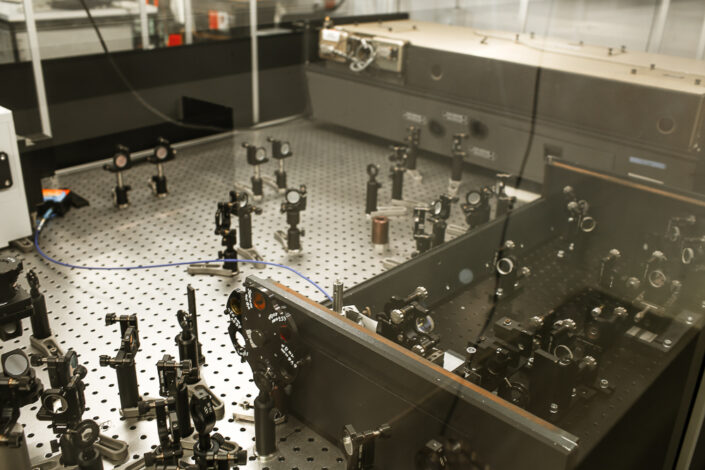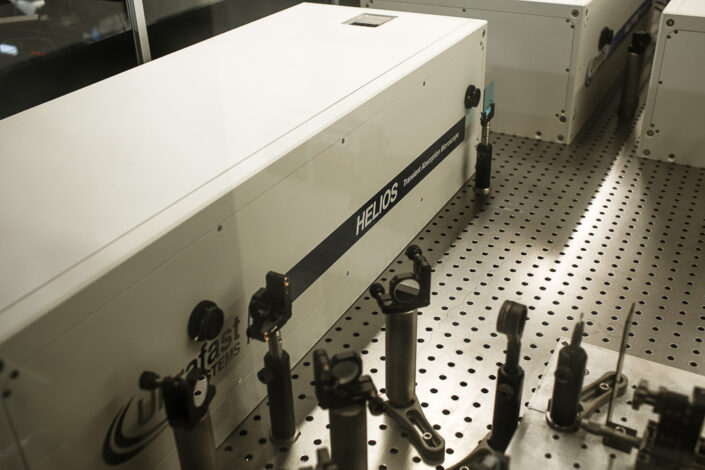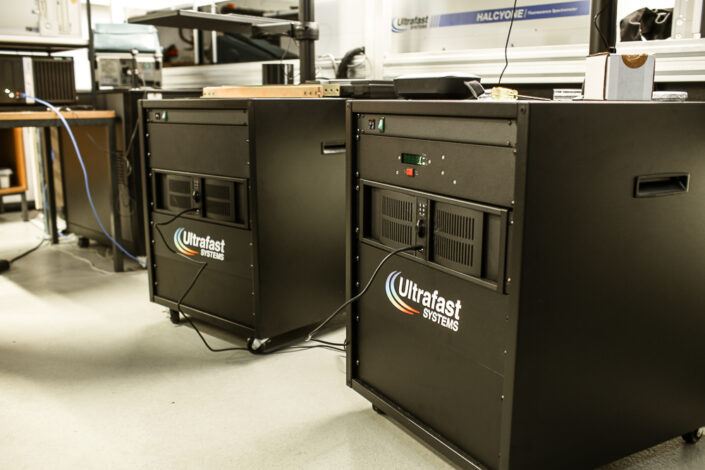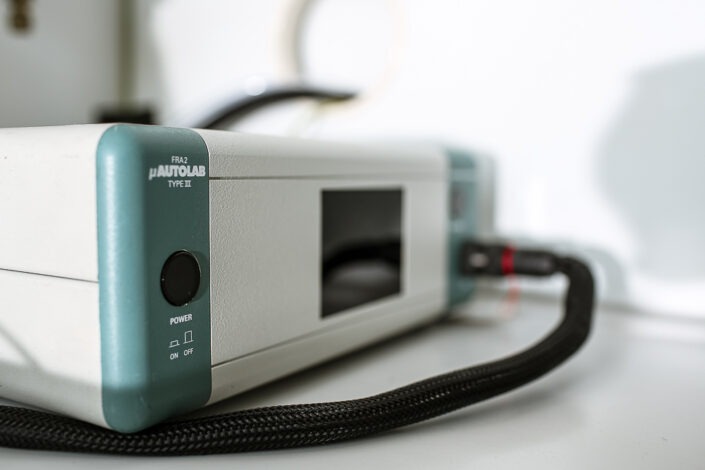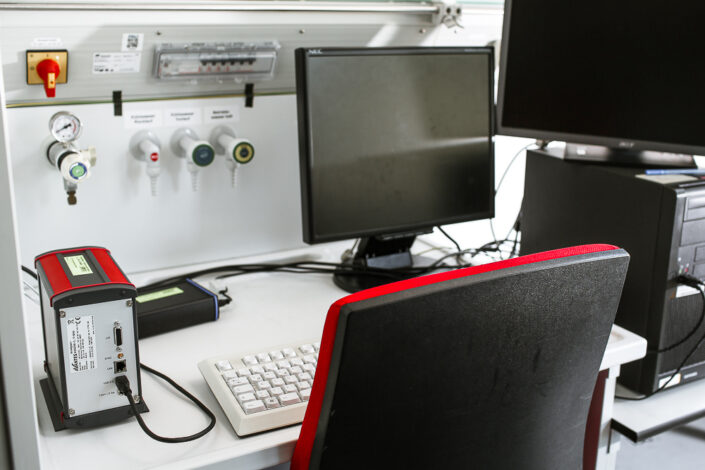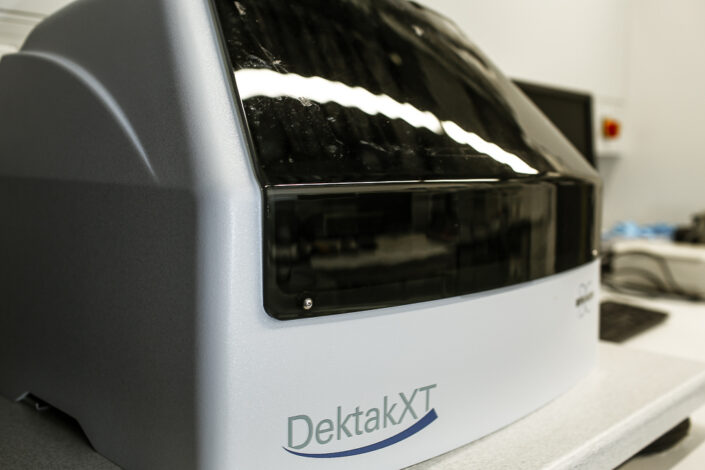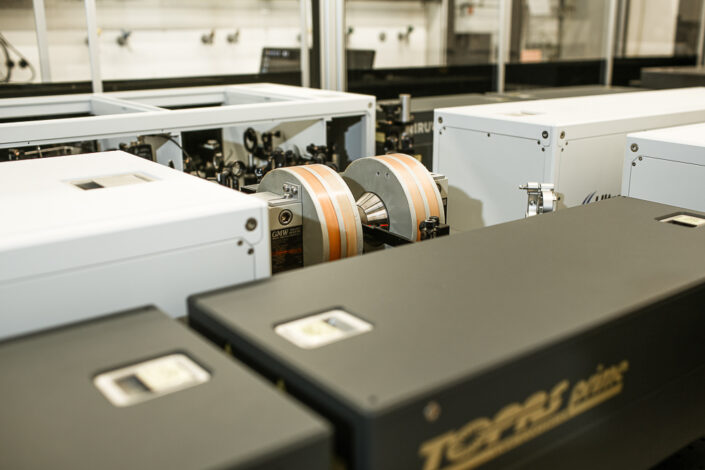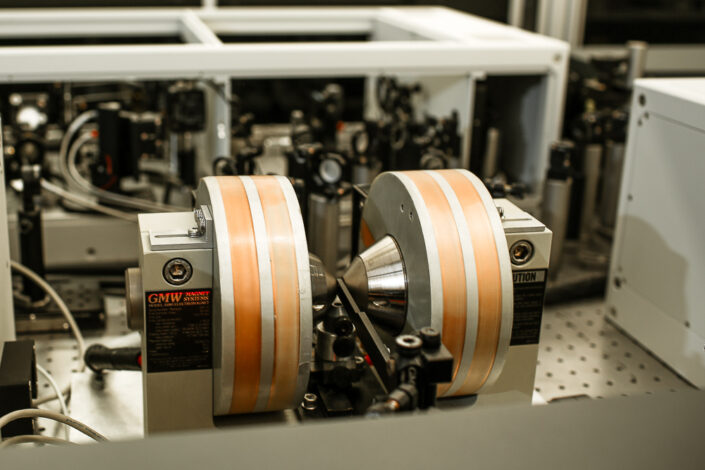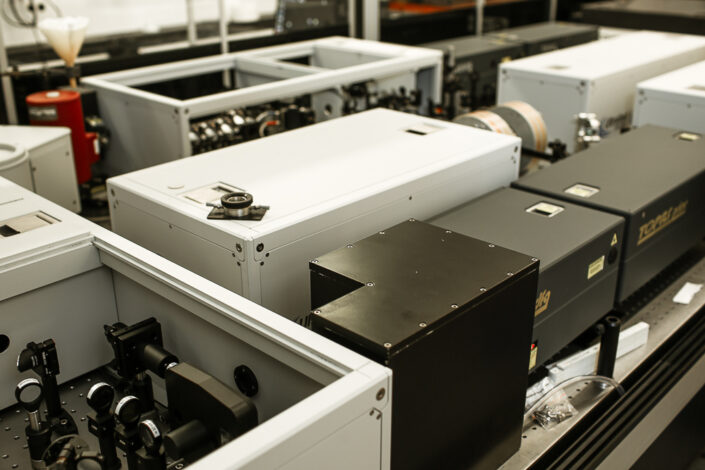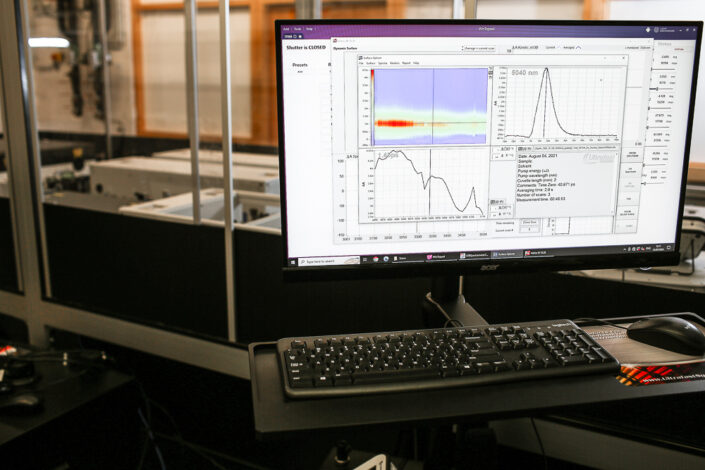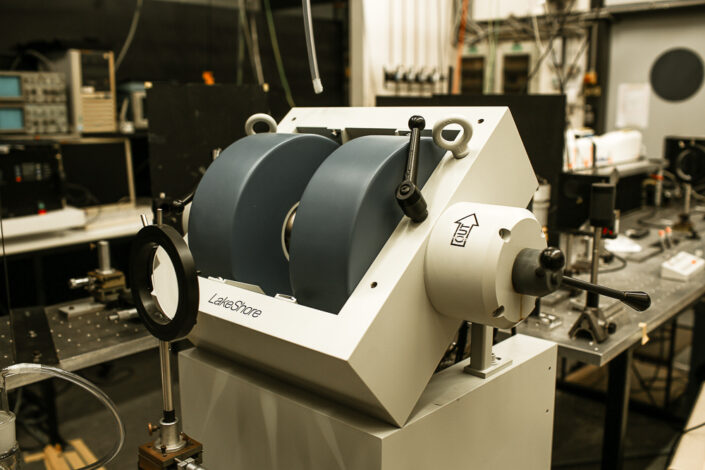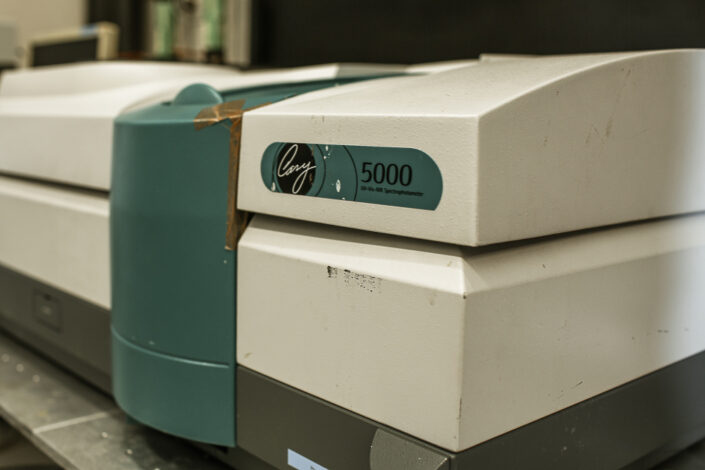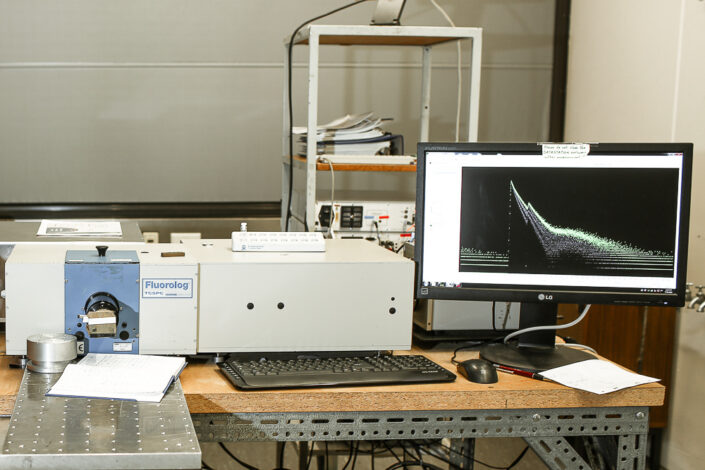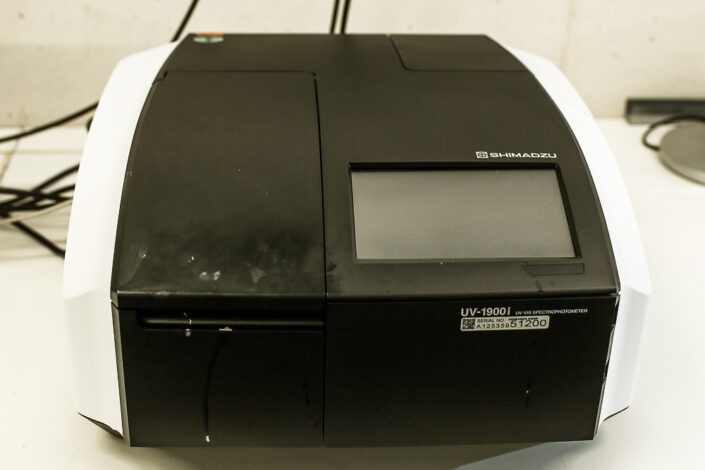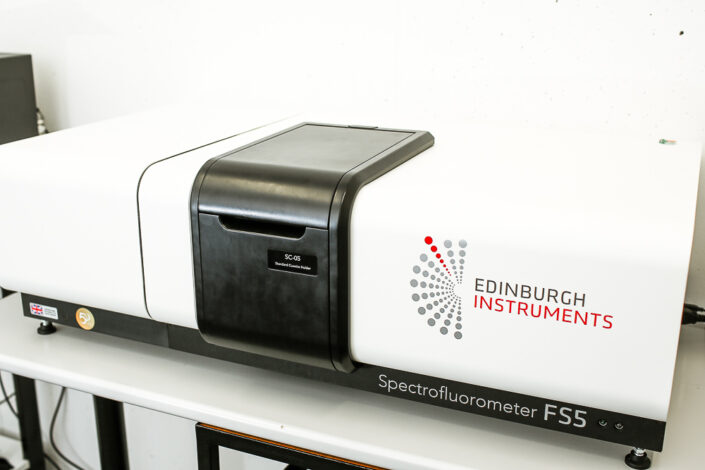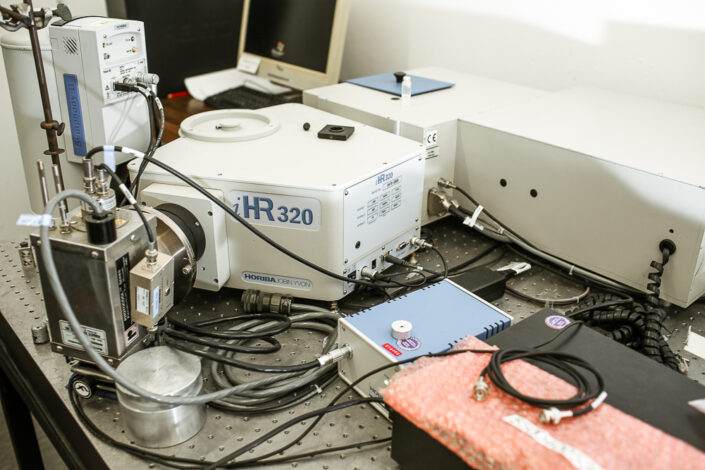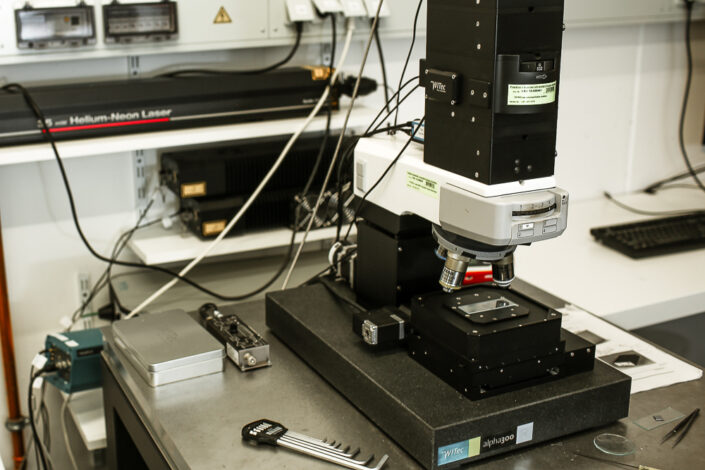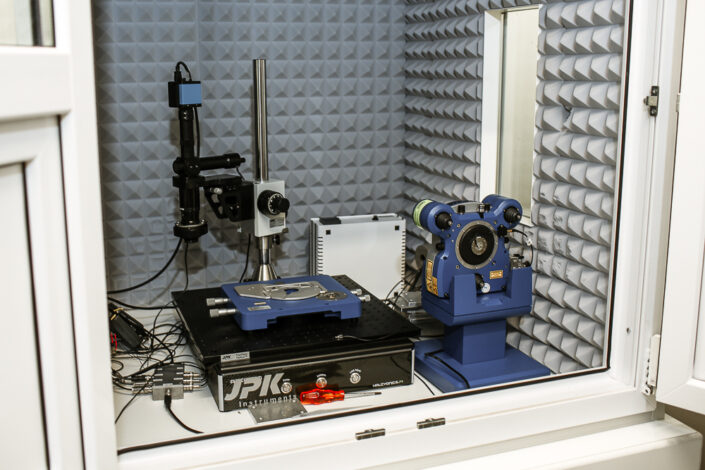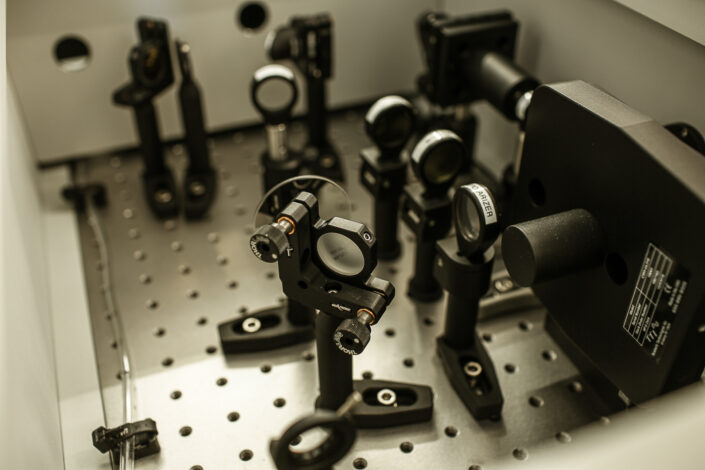Equipment
The Guldi group has access to several chemical, physical and laser laboratories. Besides standard equipment the chemical labs contain glovebox, plasma cleaner, hot plate, automatic film applicator coater, spin coater, centrifuge, ultrasonic fingers, Schlenk line, etc.
For electrochemical characterization of samples (cyclic voltammetry, pulsed techniques like differential pulse voltammetry, and electrochemical impedance analysis) various potentiostats (Autolab, Metrohm) are available. Spectroelectrochemistry can be performed by combining the electrochemical techniques with various spectroscopies (see below) employing Optically Transparent Thin Layer Electrode (OTTLE) cells.
Two electromagnets (Model FC-EM4-HVA-O, Cryophysics GmbH; 3480 Dipole Electromagnet, GMW Associates) and a cryostat (OPTISTAT DN, Oxford Instruments) can be installed in some of the below mentioned spectrometers / setups in order to perform measurements in variable magnetic fields (as high as 2 T) and at low temperatures (as low as 80 K).
Vibrational spectroscopy in our lab includes IR spectroscopy (IR Prestige 21 with ATR unit, Shimadzu) and Raman microscopy (Alpha 300R, Witec). Here, fast Raman imaging is possible at three different excitation wavelenghts (457, 532, 633nm) with the aid of a motorized positioning stage and an ultrasensitive TE cooled spectroscopic camera with backside thinned EMCCD chip.
A Cary 5000 UV-VIS-NIR absorption spectrometer (Varian) – including an external DRA with total reflectance integrating sphere – as well as various other UV-VIS spectrometers (UV 1900i, Shimadzu and AvaSpec, Mountain Photonics) are used to measure the steady state extinction/absorption of liquid or solid samples in the UV, visible and NIR spectral range. Regarding steady state fluorescence, Fluoromax and Fluorolog 3 (Horiba) as well as FS5 (Edinburgh Instruments) spectrometers, incl. integrating spheres are valuable tools to evaluate the steady state emissive characteristics (spectra, quantum yields) of liquid and solid materials.
At the heart of our research are time resolved spectroscopies. Our laser laboratories contain several laser tables and are equipped with three fs lasers and various ns lasers. Laser system 1 features transient absorption spectroscopy. A titanium:sapphire laser (Coherent, Astrella) produces pulses of ~100 fs in duration at a 1 kHz repetition rate with an average power of ~5 W; two OPAs (TOPAS Prime, TOPAG AG) enable variation of the excitation (or probe) wavelength from the UV (290 nm) to mid-IR (20 000 nm) allowing us to perform pump-probe spectroscopy over the whole spectral range with a time resolution below/around 100 fs (Helios and Helios IR, Ultrafast Systems) on short time scales (< 8ns). Slower kinetics can be followed by the respective extensions (EOS and EOS IR, Ultrafast Systems), where an appropriate ns laser is coupled to the fs laser system. This extensions enable to follow kinetics from the ns to the ms time range. In addition, a home-built ns flash photolysis setup employing a Nd-YAG ns laser (Brilliant B, Quantel) is available (in a separate room) for transient absorption measurements over a time domain that ranges from roughly 8 ns to seconds.
In another laser lab a Clark CPA laser delivers 150 fs laser pulses at a wavelength of 775 nm with a repetition rate of 1 kHz to two Non Collinear Parametric Amplifiers (NOPAs) convert these pulses into pulses of the desired wavelengths needed for the experiments. An ultrafast fluorescence up-conversion spectrometer (Halcyone Femto; Ultrafast Systems) acquires fluorescence kinetics in the “few hundreds of fs” to “few ns” time range in the visible spectral range (400 – 750 nm). This system features a motorized, computer-controlled 2D-sample holder that enables investigations on liquid and solid samples. Furthermore, a fs time resolved wide field microscope (HELIOS Microscope WIDEFIELD, Ultrafast Systems) allows the simultaneous acquisition of single wavelength transient absorption kinetics over a large area with sub-micron spatial resolution and femtosecond time-resolution.
In autumn 2023 we started to work on (Transient) 2D electronic and (Transient) 2D infrared spectroscopy. A titanium:sapphire laser (Coherent, Astrella) produces pulses of ~70 fs in duration at a 1 kHz repetition rate with an average power of ~7 W; Two OPAs (TOPAS Prime, Coherent) enable variation of the excitation (or probe) wavelength from the UV (290 nm) to mid-IR (20 000 nm) allowing to perform (transient) 2D spectroscopy with various commercial spectrometers (2DQUICK IR, 2D QUICK VISIBLE, 2DQUICK TRANSIENT, Phase Tech Spectroscopy) based on the user friendly technology of pulse shaping.
Time resolved emission spectroscopy on the ps to ns time scale is routinely performed with a Fluorolog spectrometer (Horiba), equipped with an MCP detector via time-correlated-single-photon-counting (TCSPC). Here, a SuperK Fianium FIU-6 supercontinuum laser (NKT) with variable repetition rate and selectable wavelength in the range from 400 nm to the NIR as well as a Vis-UV picosecond laser (Picoquant) with additional laser lines in the UV (266, 355nm) serve as excitation sources.
Our experimental portfolio is rounded off by the characterization of solar cells with a home-built solar cell simulator / EQE measurement setup (Newport), ellipsometry (UVISEL-LT/halogen, Horiba), profilometry (DEKTAK XT, Bruker), atomic force microscopy (Nanowizard 4, JPK Instruments), and electron microscopy (EVO 40 and EM 912, Zeiss).


